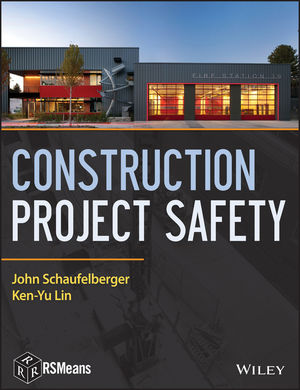Posted on Construction management .net
Introduction
When many people think about carbon emissions, they assume that cars and other motorized vehicles are the main culprits. However, building construction uses 30 percent of all raw materials consumed in this country and 12 percent of all available potable water – 15 trillion gallons each year.
This level of water consumption is ultimately unsustainable, given that the United Nations World Water Development Report 3, issued in 2009, states that one-third of the world’s population already lacks access to clean water. The report projects that at the present rate of consumption, two-thirds of the world’s population will live in water-stressed conditions by 2025.
Buildings continue to be environmentally demanding after construction has been completed. Buildings and the built environment account for 30 percent of all greenhouse gas emissions in the United States and 30 percent of all waste products – some 136 million tons annually. As a major contributing factor to climate change, greenhouse gases have had a detrimental effect on the health of the planet, including rapid and perhaps irreversible melting of Arctic polar sea ice.
Green building benefits
Green construction can reverse much of the detrimental environmental impact of conventional construction methods. Along with environmental gains, eco-conscious construction can enhance the bottom line of individual companies and of the overall American and world economies. The USGBC reports that increased efficiency in construction and building maintenance would eliminate 1.1 gigatons of greenhouse gas emissions each year – while saving the U.S. economy $130 billion.
Providing aesthetic benefit for observers of nearby taller buildings as well as natural habitat enclaves, green roofs and rooftop gardens can mitigate air temperature inside the building, reducing the need for artificial heating and cooling.
Their presence also helps to reverse the heat island effect caused by massive amounts of concrete present in a typical urban area. The soil in a rooftop garden also absorbs a significant portion of rainfall, thereby diverting rainwater from storm sewers. At the same time, a dry green roof adds only 17 pounds per square foot to a roof’s load; a wet green roof adds 30 pounds per square foot. Rooftop gardens are more demanding, adding up to 100 pounds per square foot to a roof’s load.
Green construction also improves the health of individuals who live and work inside buildings. LEED standards for green construction call for the elimination of formaldehyde and other building materials that emit volatile organic compounds, also called VOCs, which contribute to “sick building syndrome.” Employing green building construction and maintenance standards for natural light and temperature control also improve worker efficiency and reaction times.
Many municipalities and states, as well as the United States federal government have provided financial incentives to encourage green construction and retrofits, including expedited permit approvals, tax abatements and technical assistance. These financial incentives apply to new construction and to retrofits, and not only reduce upfront construction costs, but present a selling point for would-be developers, buyers and tenants.
LEED and Green Construction
In the United States, the dominant standard for measuring environmental features is LEED, an acronym that stands for Leadership in Energy and Environmental Design. LEED standards, developed by the United States Green Building Council, can be applied to new construction, and to buildings that are already standing.
LEED standards are designed to measure and evaluate the environmental consciousness of construction, general maintenance, landscaping and climate control. Different LEED standards apply to commercial buildings, residential buildings, even entire neighborhoods.
Buildings that meet LEED standards for green construction apply sustainability methods to several phases of construction, including the building shell, climate control inside the building, water usage, landscaping, sourcing of building materials and disposal of construction wastes.
There are presently five levels of LEED certification for green construction: certified, bronze, silver, gold and platinum. As of 2012, LEED Platinum structures exist in 25 countries worldwide. The United States has 950 LEED Platinum projects; India is second with 35 LEED Platinum projects.
The worldwide financial crisis has slowed or halted construction to all-time low levels. Nonetheless, green construction of non-residential structures has maintained, or even gained, in market share. In fact, green construction presently accounts for one-third of all non-residential design and construction projects and will account for more than half of all non-residential construction within five years. Green construction is expected to generate 8 million construction-related jobs by 2013.
Growth in green construction is not limited to new projects. In fact, as of December 2011, existing LEED-certified building space exceeded new LEED-certified construction by 15 million square feet. A significant number of green retrofits are devoted to architectural icons such as the Empire State Building, which recently gained LEED Gold status through its retrofit project. The renovation is projected to cut energy use by nearly 40 percent, which translates to annual savings of $4.4 million per year – and a payback of renovation costs in only three years.
Another green retrofit is in progress for the Sears Tower, recently renamed the Willis Tower. Once the tallest building in the world, this Modernist icon in Chicago still stands as the tallest building on the North American continent. Beginning in 2009, the process of “greening” the tower has focused on retrofitting various features of the structure, with impressive results. For example, installing low-flow toilets and faucets conserves more than 10,000,000 gallons of water each year. Shading the building’s windows significantly reduces heating and cooling requirements.
Eventual plans include a complete overhaul of the electrical system to reduce energy consumption by 80 percent. Replacing 16,000 single-paned windows and constructing a thermal bank would save 50 percent on heating energy. A proposed 500-room “green” luxury hotel would be powered entirely by the tower’s energy system and would pursue LEED Gold status. Besides the projected sustainability gains and energy savings, the five-year project would create as many as 3,600 jobs, according to developers.
Green Construction Resources:
· ICC 700 National Green Building Standard
· International Green Construction Code
· Regreen Residential Remodeling
LEED certification in America and worldwide
Twenty-one countries participate in the LEED International program: Argentina, Brazil, Canada, Chile, Columbia, Finland, South Korea, India, Italy, Jordan, Mexico, Norway, Poland, Romania, Russia, Spain, Sweden, Turkey, France and the United Arab Emirates. The United Kingdom launched an equivalent to LEED, known as the Building Research Establishment Environmental Assessment Method (BREEM), in 1990.
An even more stringent standard is the Living Building Challenge, granted by the International Living Future Institute. As of 2012, four construction projects had earned this certification: the Tyson Living Learning Center in Eureka, Missouri; the Omega Center for Sustainable Living in Rhinebeck, New York (also LEED Platinum); the Eco-Sense home in Victoria, British Columbia and the Hawaii Preparatory Academy Energy Lab in Kamuela, Hawaii (also LEED Platinum).
In March 2012, the International Code Council released the 2012 International Green Construction Code (IgCC), a cooperative effort between the American Institute of Architects and ASTM International (formerly known as the American Society for Testing and Materials), which cosponsored the project with the support of ASHRAE (the American Society of Heating, Refrigerating and Air-conditioning Engineers), the United States Green Building Council (USGBC) and the Illuminating Engineering Society.
The IgCC is the first sustainability measurement that addresses the entire life cycle of a building, from design and construction to occupancy – and beyond. The IgCC is intended to provide a compliment rather than a replacement for LEED as an environmental building certification standard.
Further Reading
- 2012 International Codes
- ASTM International
- Chicago’s City Hall Rooftop Garden
- Connecting the Dots: Green Building and Climate Change
- Federal Tax Credits for Consumer Energy Efficiency
- Green Building Codes 101
- New Green Building Code References ASTM Standards
- The International Green Building Code Is Live – But What Does It Mean?
- Internal Revenue Service: Deduction for Energy Efficient Commercial Buildings
- LEED Frequently Asked Questions
- Public Policies Adopting or Referencing LEED
- The Sears Tower Goes Green, Gets Wind Turbines in $350 Million Renovation
- What Is LEED?






